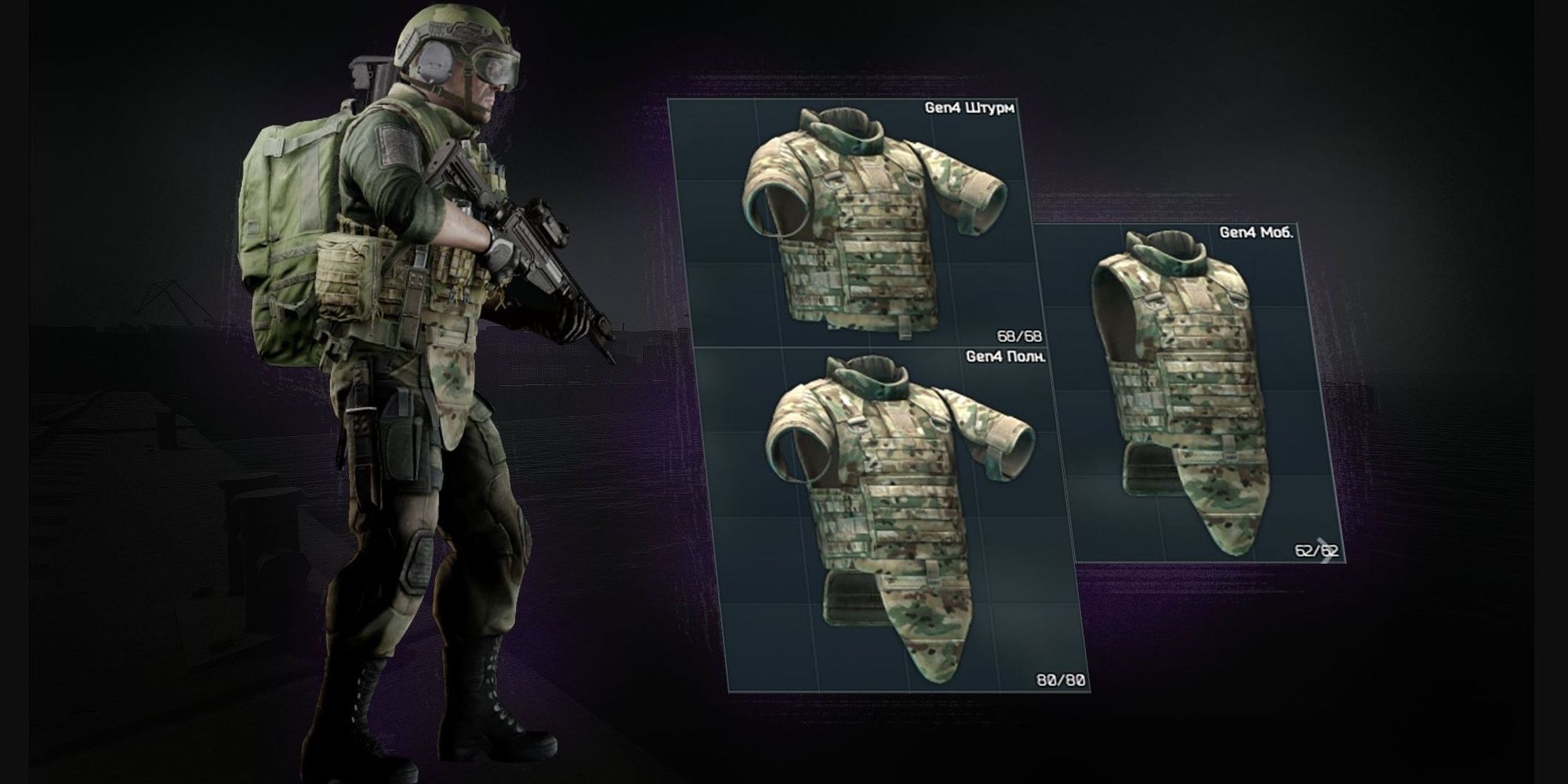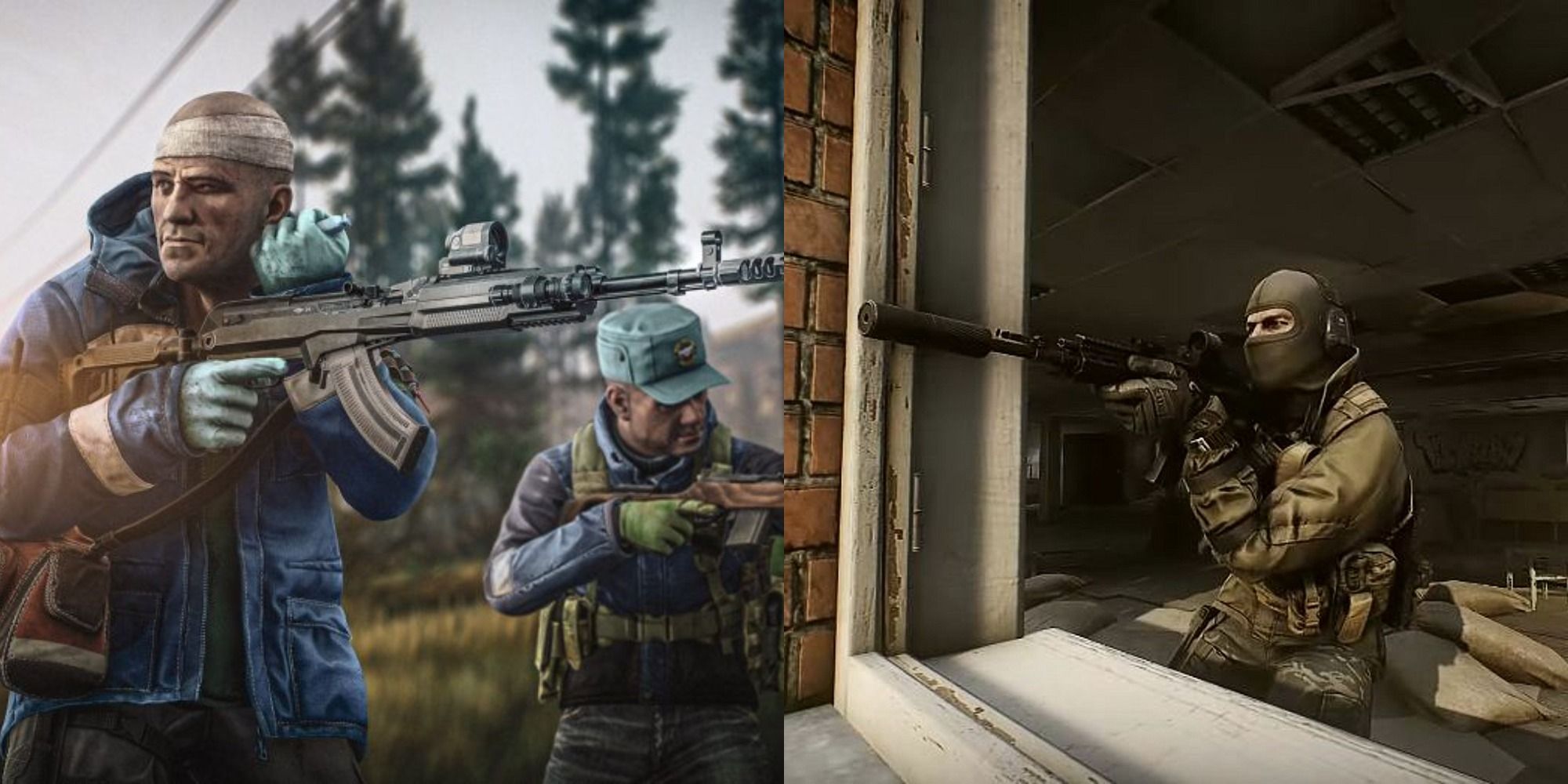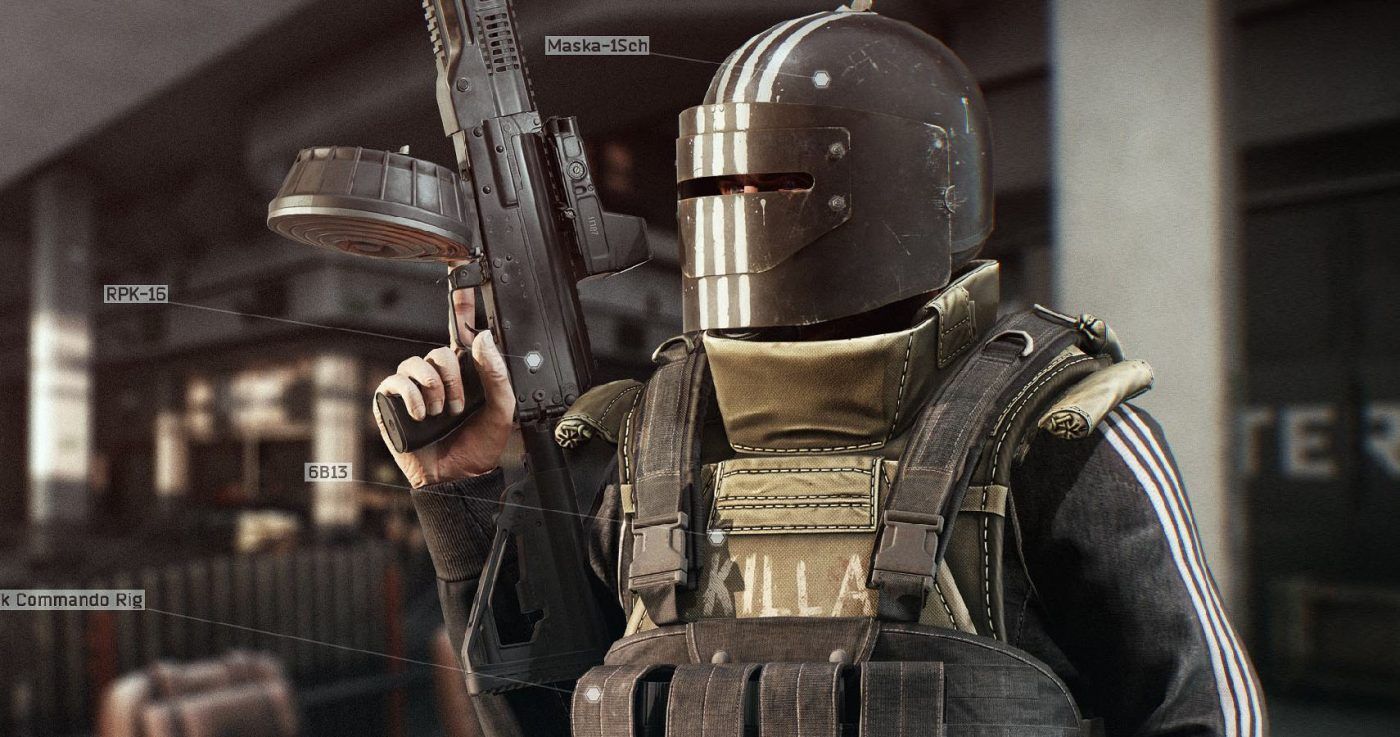Escape from Tarkov (EFT) is one of the most realistic and complex survival shooter games available.
Its complex armor system, which considers factors like material type, durability, repairability, weight, protection class, and layering, can be overwhelming for many players.
This guide will break down Tarkov’s armor mechanics, explain the different plate materials, and rank them from best to worst.
How Armor Works in Escape from Tarkov

In Tarkov, armor is designed to protect vital parts of your character, especially the chest and stomach, from enemy bullets. Two key terms to understand are:
- Armor Class: Ranges from 1 to 6, with higher classes offering better protection against penetration and damage. For example, Class 4 armor works well against most mid-tier ammo like 5.56 M855, while Class 6 armor can stop high-tier rounds.
- Materials: The type of material determines a plate’s survivability, durability, repairability, and weight. Some materials are better at reducing damage across multiple hits.
To survive in Tarkov, you need to understand not just which armor is good, but also how the combination of armor material and bullet penetration affects the outcome of firefights.
Armor Plate Materials Ranked: Best to Worst
Armor plates, particularly removable ones for modular armors, are essential in Tarkov. There are six main armor plate materials in the game, each with different survivability characteristics:
- Titan: Considered the best in terms of protection and survivability, Titan plates last longer, withstand more hits before breaking, and provide excellent bullet protection. Despite being heavy and expensive, they are worth it for their performance.
- Combined Materials: Plates made of combined materials (e.g., Spartan Omega armor plates) perform similarly to Titan plates. While they may have slight differences in durability or weight, they offer comparable damage reduction. If Titan plates are unavailable, choose combined material plates.
- Aluminum: Aluminum plates provide decent survivability but are slightly inferior to Titan and combined materials plates. They are lightweight and offer adequate protection, making them a good choice for mid-tier setups.
- Ultra-High Molecular Weight Polyethylene (Poly or UHMWPE): Poly plates offer similar protection to aluminum but are significantly lighter. They are effective against moderate calibers of ammunition. However, both poly and aluminum plates are much less durable than Titan and combined materials.
- Steel: Steel plates are heavy but cheap, making them common in Tarkov. However, steel has a significant weakness—it wears out very quickly. Once penetrated, steel plates lose durability faster than any other material, potentially putting players in danger sooner.
- Ceramic: Ceramic plates provide reasonable protection and are quite common, but they are the least durable. After taking a few hits, ceramic armor becomes heavily damaged and essentially useless. Avoid ceramic unless it’s your only option.
Note: Materials like aramid and glass are used for the soft armor that backs plates, but they are not plate materials themselves.
Bullet Interactions: What Determines Survivability?
In the game Escape from Tarkov, your character’s survival heavily depends on how well your armor can protect you from enemy bullets.
The game has a complex system that determines the effectiveness of different types of armor against various kinds of ammunition. Let’s break down the key factors that come into play.
Penetration Chances by Ammo Class
One of the most important things to consider is the “penetration value” of the bullet being fired at you, and how it compares to the “armor class” of the gear you’re wearing.
Ammo with higher penetration will cut through armor more easily. For example, M855 ammo has a penetration value of 31, which makes it good against Class 4 armor, but not so effective against Class 5 or 6.
Damage Reduction
Even if a bullet manages to penetrate your armor, the armor will still reduce the damage you take.
So if an M855 round (which normally does 54 damage) gets through your plate, the armor might reduce that damage down to only 32.
Durability Loss
Every time a bullet hits your armor, it will cause the armor’s durability to go down a bit.
The amount of durability loss depends on the material the armor is made from. Steel armor loses durability faster than fancy materials like Titan.
Layering: The Importance of Soft Armor
One of the best ways to increase your chances of survival is to wear both hard armor plates and soft armor inserts (like Kevlar) together.
Even if a bullet penetrates your plate, it then has to go through the soft armor underneath, which gives it another chance to be stopped or weakened.
Imagine your plate carrier has a strong plate in it, with some Kevlar backing behind that plate.
When you get shot in the chest, the game first calculates if the plate stops the bullet. If the bullet gets through, it then has to deal with the Kevlar, which makes it even less likely to hurt you.
Our tests have shown that combining plates with soft armor leads to way better protection. You might go from being able to survive 6 shots before you’re in big trouble, to being able to take 10 shots.
Choosing the Right Ammo for the Job
Using ammo with higher penetration is important when you’re up against high armor. M855 might be okay against Class 4, but if you want to fight Class 5, you’re better off with something like M855A1.
As a general rule, look for bullets with more than 31 penetration to deal with Class 4, and more than 41 pen for Class 5. The 7.62 BP (42 pen) or 5.45 BS (49 pen) rounds are great for the big boys in Class 5 and 6 armor.
So in summary – wear good armor that uses plates and Kevlar together, and pack ammo that can punch through the armor your enemies are likely to use.
That’s the key to staying alive in Tarkov.
Real-World Implications: What Matters in Gameplay?
While we can use numbers and tests to get an idea of how many shots it takes to kill someone wearing certain armor, real gunfights in Tarkov are a lot more unpredictable.
Here are a couple of important things to keep in mind:
Bullet Spread
In an actual fight, not every bullet is going to hit the other guy square in the chest.
Some shots will hit their arms, stomach, or other parts of the body that aren’t as well protected.
When this happens, the bullet won’t penetrate or do damage as effectively.
Accuracy
Most players don’t have perfect aim. In fact, the average player probably lands less than 25% of their shots.
This means you’ll need to shoot more bullets to actually get enough hits to penetrate the enemy’s armor.
Even tiny differences in ammo types or armor materials can be a big deal in a firefight.
Being able to survive just two extra bullets could give you the time you need to get to cover or land the killing shot on your opponent.
Choosing the Right Setup for Your Raids

Knowing all this, it’s really important to choose your gear wisely before heading into a raid.
Here are some suggestions based on what you’re trying to accomplish:
- Budget Focus: Use Class 4 armor with aluminum or poly plates paired with low-cost ammunition like M855. Add aramid backing to improve tankiness.
- Mid-Tier PvP: Opt for Class 5 armor with Titan or combined materials plates. Use ammunition penetration around 40–43 to deal with common armors effectively.
- High-End Protection: Pair Class 5 plates with CPC soft armor for the best survivability. Use top-tier ammo like M995 or 7.62 BP for maximum damage.
Avoid modular setups like Hexgrid plate carriers unless you’re confident about positioning, as lacking soft armor can lead to shorter survivability times.
Conclusion
The armor system in Escape from Tarkov is really complex, but taking the time to learn it can make a huge difference in how well you do on your raids.
Always try to wear the highest class armor you can afford, and pay attention to what it’s made out of. Combining hard plates with Kevlar is the key to staying alive longer.
And of course, make sure you’re using ammo that can punch through the kinds of armor you expect to be facing.
If you keep these things in mind and play smart, you’ll be stacking up the wins in no time.
Now get out there and show ’em what you’re made of!




